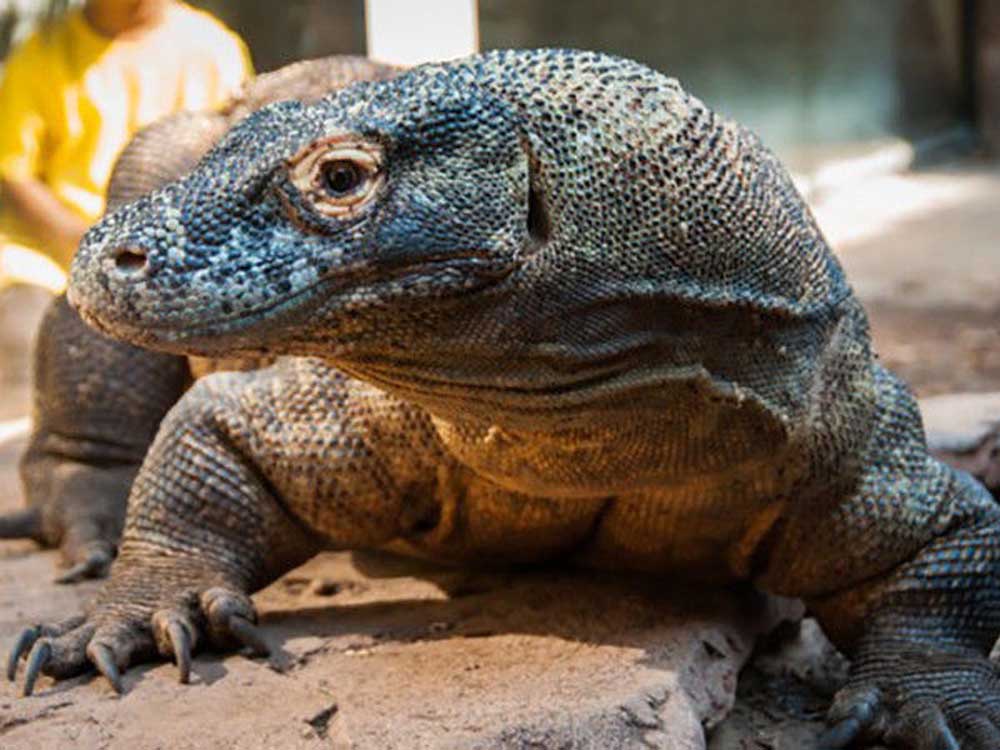Smaug the dragon gets a leg brace at Houston Zoo
Published 11:49 am Friday, April 10, 2015

- Smaug, one of the Houston Zoo's resident Komodo dragons. (from blogs.houstonzoo.org)
HOUSTON (AP) — Sometimes even dragons need a little medical help.
Last year, zookeepers at the Houston Zoo noticed that Smaug, a 17-year-old Komodo dragon, wasn’t using his right front foot normally. “Occasionally, he was flipping it underneath and walking on the top of his toes,” said Dr. Lauren Howard, associate veterinarian at the Houston Zoo. “We’re still trying to determine why he’s not holding his foot the right way, but in the meantime, our goal is to keep him holding his foot upward so he doesn’t continue to walk on the tops of his toes.”
In November, Howard got in touch with Jared Howell, director of the Orthotics and Prosthetics Program at Baylor College of Medicine, to see if he could help. The problem was described as a case of drop foot, a layman’s term for a condition in which people can’t lift the top of their foot.
Howell and his team set out to build a spring-loaded brace that would allow Smaug a natural range of motion but would properly position his foot with every step.
A dragon’s front leg functions somewhat like a human’s arm. The foot bends backward when the dragon lifts it from the ground, then flips forward, much like the range of motion of a human wrist.
“When a Komodo dragon picks up its foot, it slides forward and they fire their muscles and they are able to put their palm downward,” Howell told the Houston Chronicle. “What happened for Smaug is that he wasn’t able to fire his muscles to pull the foot forward.”
Instead, Smaug’s foot would stay in the flexed position and he would land on it, rolling his wrist underneath and walking on the tops of his toes.
“He’s over 200 pounds, so that’s a lot of weight,” Howell said.
Judith Bryja, supervisor of the zoo’s herpetology department, said it’s common for dragons to move in this fashion once in a while.
“But he started doing it with the right front foot more and more. We didn’t know what was going on,” she said. “It’s not like he fell down and injured it or sprained it playing baseball.”
Howell’s team made molds of Smaug’s foot while he was anesthetized for other tests. They created a spring-loaded, hinged polyurethane orthotic brace that would help him walk normally. The initial brace, which extended to just below Smaug’s elbow, worked well but came off too easily. A second version extended above the elbow and stayed on much better.
The team was able to use many of the same concepts used to attach artificial arms in humans.
“It was interesting to see that transfer, but there’s a lot that didn’t transfer,” said Lorin Merkley, an orthotics instructor at Baylor who worked on Smaug’s brace. “We thought this should be easy. It was not.”
When Smaug developed an infection in his foot, the team made another rigid device to hold his foot in place while he healed.
Smaug may have to wear a brace for at least four to eight months. If his foot heals and regains strength, he may be able to ditch the device. But there is a chance he may need the brace long-term.
“The goal is for him to relearn how to walk, but he’s 17 years old,” Howell said, noting that Komodo dragons generally live into their 20s. “If there’s a true nerve paralysis, it may not get better. He may be wearing the spring-loaded device forever.”
The effort to get Smaug walking correctly has been a collaborative process between the Baylor orthotics experts and zoo personnel. On Thursday, Bryja asked for another modification to the current brace, drilling a few holes in it to help with breathability.
“It’s fun, because everything is a challenge,” Howell said. “Trying to find something that will interface with the scales appropriately, it forces us to think outside the box with materials as well.”
Bryja said an estimated 4,000 Komodo dragons remain in the wild, on five islands in Indonesia. But their food supply is diminishing as humans have begun to hunt deer, their primary food source. They can take down prey as big as a water buffalo.
Smaug, who was born at a zoo in Miami and came to Houston in 2001, eats mainly rabbits and rats, with an occasional ostrich egg or goat.
Baylor has a longstanding relationship with the Houston Zoo and previously partnered with the zoo to rid elephants of a herpes virus. The zoo named one of its baby elephants Baylor in gratitude.
___
Copyright 2015 The Associated Press. All rights reserved. This material may not be published, broadcast, rewritten or redistributed.






